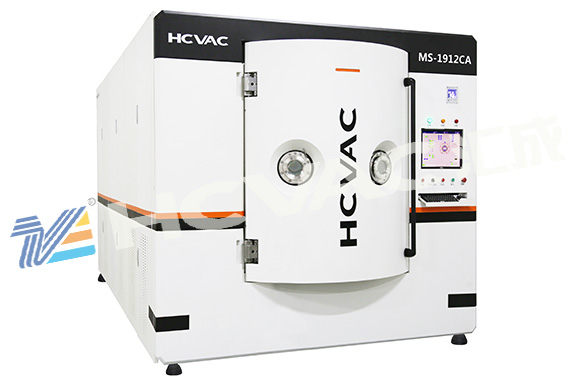Two common coating processes of pvd coating machine, evaporation and sputtering, are the most popular and widely used at present, so its attention is naturally much higher than that of other processes. Here is a summary of four common problems about pvd coating machine, hoping to help you:

1、 Why can vacuum coating be made into different colors, including seven colors?
Because a layer of UV varnish finish is sprayed after vacuum evaporation, different colors can be made on this layer of paint. Steam plating can be made into seven colors by plating some silicides, but it is relatively thin, which can be seen at a close distance but is not obvious at a distance,; Seven colors can be obtained by reactive plating of CSi, CO, Si and other substances by sputtering, or colorful can be obtained by multi-layer coating of different colors at low temperature.
The water electroplating is generally the natural color of metal, and the other colors need to be coated with UV finish and then UV irradiation.
2、 What is the reason for the difference in adsorbability between vacuum evaporation and vacuum sputtering?
The evaporation is adhesion, and the sputtering is strong adsorption of positive and negative electrodes. Therefore, the adsorption of sputtering is more uniform, the density is greater, and the hardness is greater. The price of sputtering is 10% - 20% higher than that of evaporation.
3、 Why can vacuum coating be made semi transparent and non conductive?
It is not completely non-conductive. Discontinuous metals or metal compounds that utilize molecules in the film state have conductivity, but the conductivity is different. However, when a metal or metal compound is in a thin film state, its corresponding physical properties will be different. Among the conventional coating materials, for example, silver is the metal with the best silver white effect and conductivity, but it is non-conductive when its thickness is less than 5 nanometers; The silver white effect and conductivity of aluminum are slightly worse than that of silver, but when its thickness is 0.9 nm, it already has conductivity. Why is this? That is because the continuity of silver molecule is not as good as that of aluminum, so its conductivity is poor under the relative film thickness. In fact, we use the principle of poor molecular continuity of some metals to control its thickness in a certain range, so that it has a silvery white appearance and high resistance. It can be seen that the effect of the metal non-conductive film is directly related to its film thickness. Only under the corresponding film thickness, the corresponding stable silver white non-conductive film can be obtained.
As mentioned above, the silver with the best silver white effect and conductivity is non-conductive when its thickness is less than 5 nanometers. Can we use silver as the metal non-conductive film we need? The answer is no. Because silver with a thickness of less than 5 nanometers is basically transparent and colorless, although it does not conduct electricity, it cannot have the effect of silver white reflective film at the same time. Similarly, aluminum is not good. Therefore, we need a metal material with silver white metallic luster and high resistance. We use tin or indium and indium tin alloy with purity above 99.99%. Tin with a thickness of less than 30 nm has poor continuity, but it can obtain silver white metallic luster and has large resistance. The same is true for indium, but the silver white reflectivity of indium is better than the appearance of tin. Because of the high price, we use indium tin alloy, so that we can get a non-conductive film and a whiter and brighter reflective metal effect! Indium tin plated non-conductive films are translucent, so we require that the substrate to be plated be transparent or black. Since the indium tin plating starts to dissolve at 250 ℃, the evaporation temperature is relatively low, so the current and time for heating, melting and evaporation are relatively low.
4、 Why is the aluminum coating of vacuum coating non-conductive?
Because the coating has three layers in total, the outermost UV varnish can solidify wear-resistant insulation after UV irradiation, but once the film is damaged, it will conduct electricity.
The
pvd coating machine evaporation coating process and sputtering coating process are not only the four common problems, but also the four most common problems with the highest attention.



